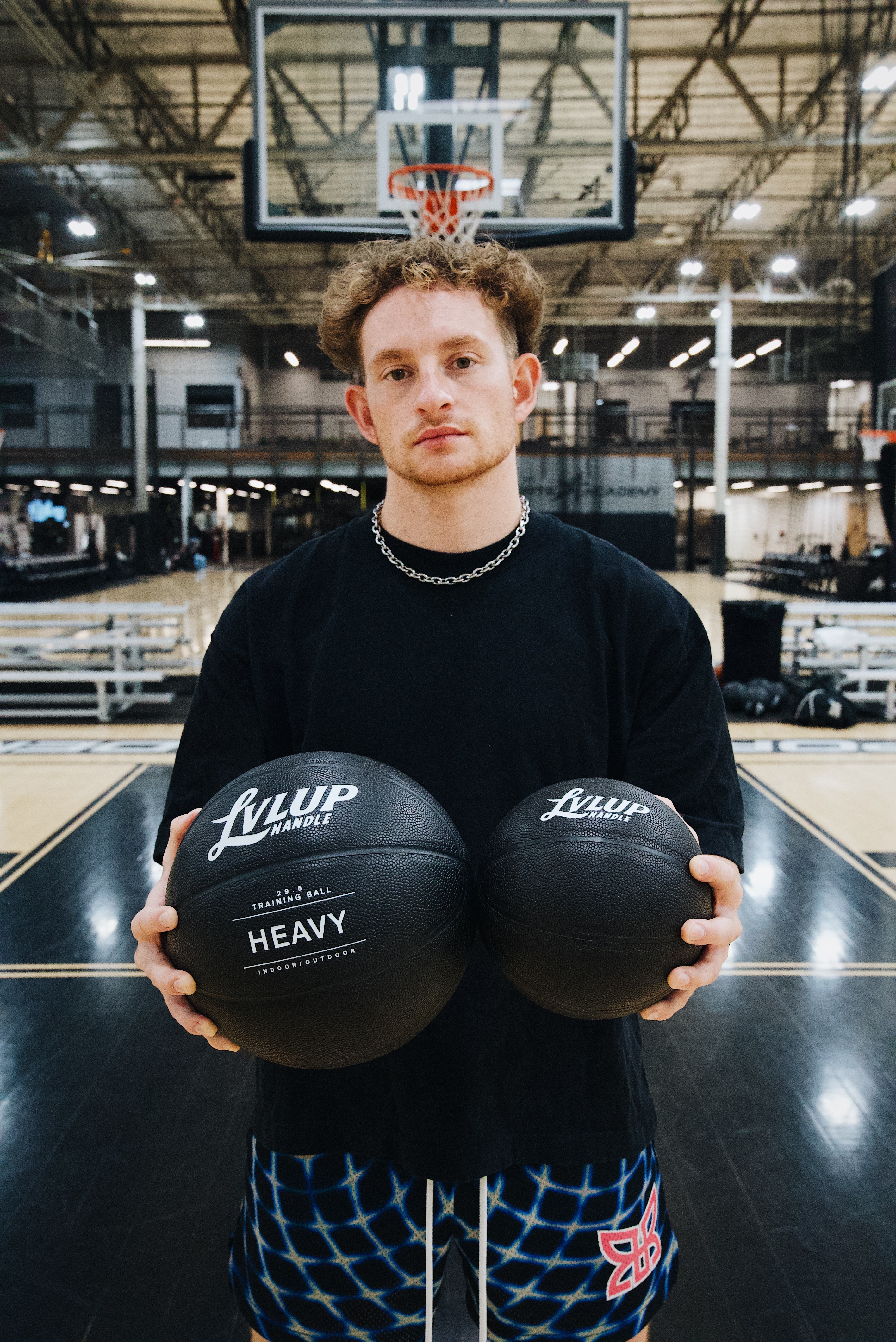Where Skill Meets Science
Every hooper wants a tighter handle, quicker reaction time, and better control under pressure. But most don’t realize there’s real science behind how those skills are built.
It’s not just about doing more cone drills or dribbling longer. It’s about training your body — and your nervous system — to move faster, more efficiently, and with more coordination.
That’s exactly what the LVLUP Handle Heavy Ball and Mini Heavy Ball were created for: tools that combine real basketball feel with scientifically proven resistance training benefits.
1. Neuromuscular Adaptation: Training the Connection Between Brain and Body
When you dribble a heavy basketball, your body has to work harder to control every bounce. That means your brain sends stronger, faster signals to your hands and forearms to maintain precision.
Over time, this process — called neuromuscular adaptation — makes those signals more efficient.
Your brain learns how to fire quicker, your hands move faster, and your coordination improves.
So even though the ball feels heavier during training, when you switch back to your game ball, your body keeps that upgraded wiring — resulting in smoother, faster handles with less effort.
2. Building Functional Strength — Not Just Muscle
Lifting weights builds size. But functional strength builds skill.
Every rep with a heavy basketball strengthens the exact muscles responsible for control — your fingers, wrists, and forearms.
You’re not just getting stronger; you’re getting more specific strength. The kind that transfers directly to ball handling, passing, and shot stability.
That’s why weighted handle work is such a powerful complement to your on-court development. You’re not isolating muscles — you’re strengthening the chain of movement that controls your game.
3. The Balance of Resistance and Feel
A lot of players try to train with ankle weights, heavy gloves, or resistance bands — but those don’t mimic real game feel.
The LVLUP Handle line is built differently.
The 3LB Heavy Ball maintains official size and bounce, and the Mini Heavy Ball adds a smaller, denser version for coordination work. Together, they challenge your mechanics without sacrificing rhythm or timing.
That balance — resistance with realism — is what makes your handle training actually transfer to live play.
4. Reaction Training & Motor Learning
When the ball fights back, your reaction time improves.
Every bounce forces your brain to calculate trajectory, spin, and rhythm. That repetition strengthens the motor learning loop — your ability to make micro-adjustments without thinking.
This is why top players seem like they’re in total control — they’re not reacting consciously. Their nervous system is trained to adjust instantly.
Heavy ball training accelerates that process, helping you move with instinct instead of hesitation.
The Science Behind the Confidence
Skill development is more than drills — it’s physiology, muscle memory, and mental flow all working together.
That’s what makes LVLUP Handle different. It’s not just a product line. It’s a system built around how your body actually learns and performs.
So if you’re serious about improving your handle — stop guessing. Start training with purpose, resistance, and science on your side.
👉 Explore the LVLUP Heavy & Mini Heavy Ball lineup at lvluphandle.comTrain smart. Build strong. LVLUP your control.
.avif)





